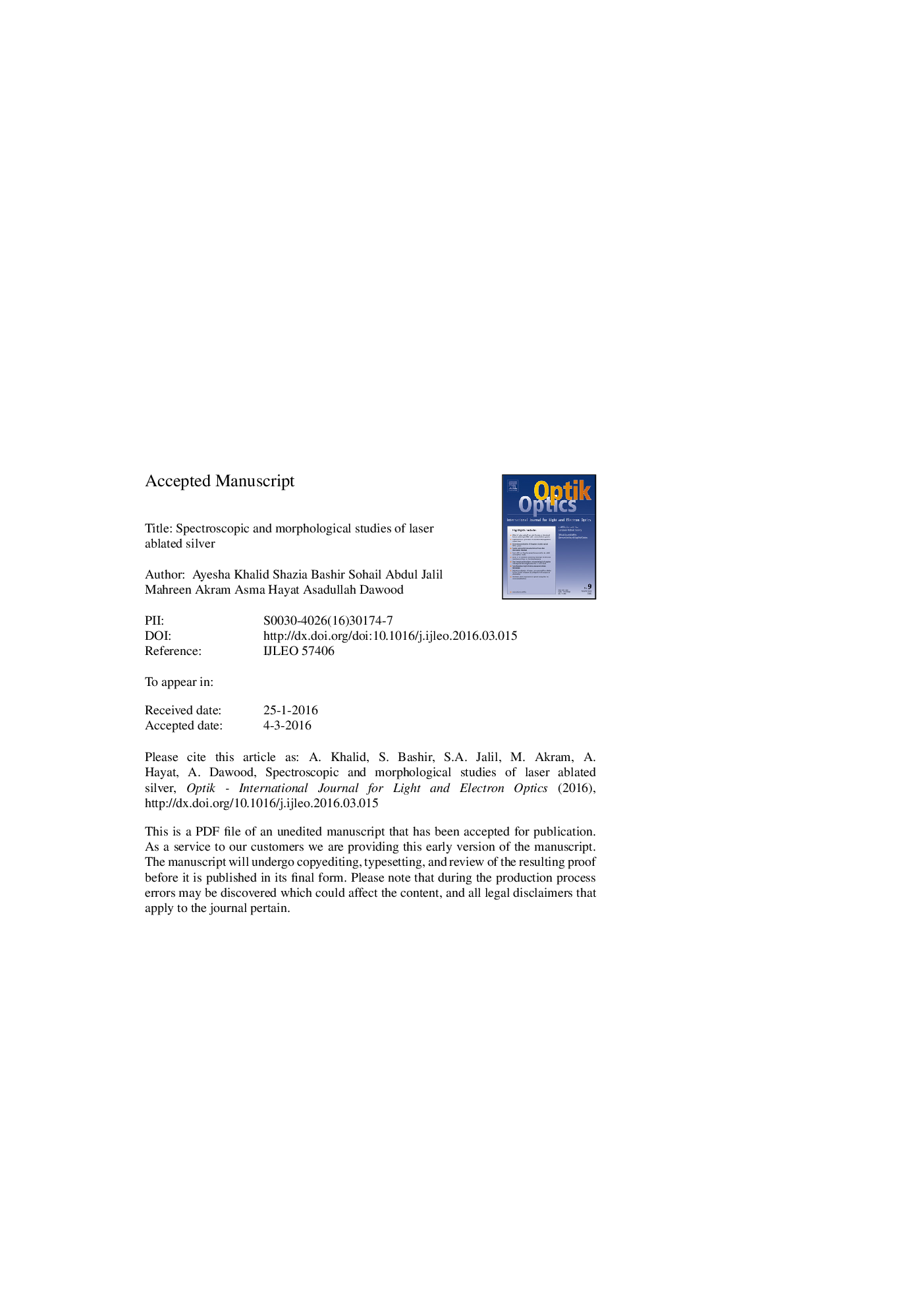| Article ID | Journal | Published Year | Pages | File Type |
|---|---|---|---|---|
| 847263 | Optik - International Journal for Light and Electron Optics | 2016 | 26 Pages |
Abstract
The spectroscopic and morphological studies of silver has been investigated after irradiation of Nd:YAG laser by employing Laser Induced Breakdown Spectroscopy (LIBS) and Scanning Electron Microscope (SEM) analyses. Silver targets were exposed to various laser fluences ranging from 5.2Â JÂ cmâ2 to 41.7Â JÂ cmâ2 under ambient environment of argon at a pressure of 100Â Torr. LIBS analysis revealed that when the laser fluence was increased from 5.2Â JÂ cmâ2 to 10.4Â JÂ cmâ2, an increasing trend for both electron temperature and electron number density of plasma was observed due to enhanced energy deposition. Afterwards, with increasing fluence from 10.4Â JÂ cmâ2 to 15.6Â JÂ cmâ2, a decreasing trend was achieved which was attributed to the shielding effect. With further increase in fluence from 15.6Â JÂ cmâ2 to a maximum value of 41.7Â JÂ cmâ2, a saturation region was achieved and insignificant changes in both plasma parameters were observed. This saturation is explainable on the basis of the formation of a self-regulating regime. SEM analysis revealed the formation of flakes and ridges on the surface of silver at the lowest fluence of 5.2Â JÂ cmâ2. For increased fluences ranging from 10.4Â JÂ cmâ2 to 41.7Â JÂ cmâ2, distinct and unorganized melted channels were the dominant features. However, at a maximum fluence of 41.7Â JÂ cmâ2, micro and nano crystallites of lamellar (tabular) shape were also formed. At peripheral ablated areas, flakes, cavities, cones and craters with multiple ablated layers were formed. The modifications in surface morphology of laser-ablated silver have been correlated with plasma parameters.
Keywords
Related Topics
Physical Sciences and Engineering
Engineering
Engineering (General)
Authors
Ayesha Khalid, Shazia Bashir, Sohail Abdul Jalil, Mahreen Akram, Asma Hayat, Asadullah Dawood,
